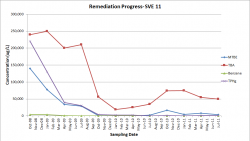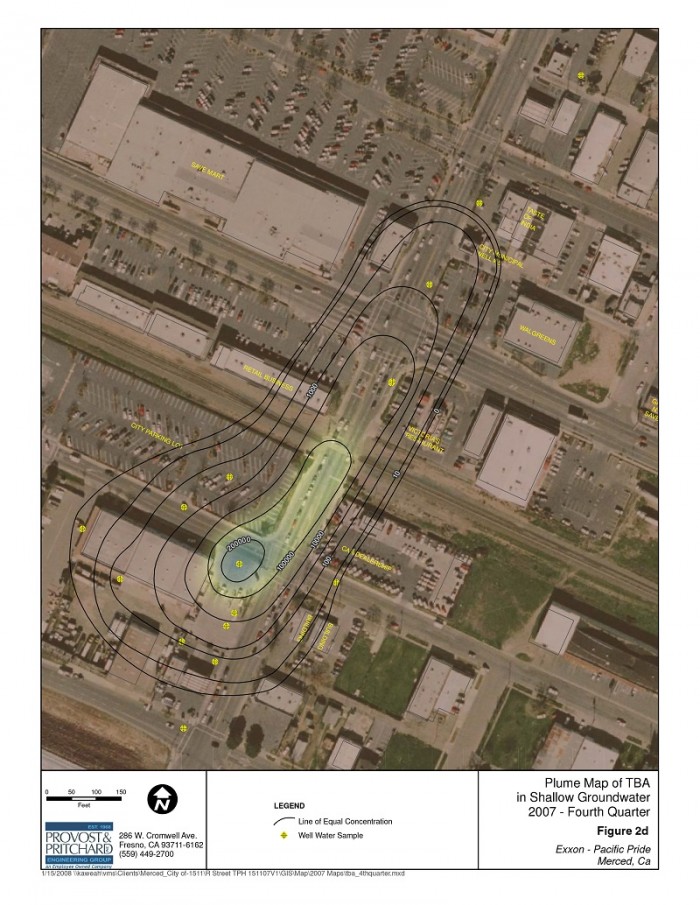Provost & Pritchard – Merced, CA
In-Situ Chemical Oxidation by way of Ozone from H2O Engineering Solves Water Quality Issues on Exxon-Pacific Pride Site in Merced, CA
Project Snapshot
Existing Conditions:
For the initial treatment phase, soil vapor extraction (SVE) was chosen as the sole remediation method. Time proved this application was ineffective.
H2O Solutions:
H2O Engineering was contracted to build two systems capable of injecting concentrated ozone gas, oxygen, and air. The air injection assists in the mass transfer of the oxidized contaminants into the vapor phase, and then is taken up by the SVE system. For this reason, the ozone injection wells were put in areas A & B within the of influence of the SVE wells, which had been previously installed on site, and screened at 20 to 30 feet below water surface.

Challenge:
The Exxon-Pacific Pride site is relatively complex in terms of breadth of contamination. In general, there are separate areas of contamination, designated as A, B, and C. Area A encompasses the two active fuel stations from which the majority of the plume is believed to have originated. Area B shows higher initial levels of contamination in both the groundwater and the vadose zone. A smear zone in this area is formed by seasonal groundwater fluctuations. Area C is on the edge of the contamination zone, where the contaminants of concern (COC) with higher aqueous mobility such as MTBE) have spread.
TPHg contamination (pre-treatment) in the shallow groundwater zone.
Solution:
- 1990 – Phase I environmental assessments on the Exxon site showed groundwater contamination from neighboring fuel stations.
- 1992 – Phase II environmental assessments confirmed the presence of significant hydrocarbon concentrations.
- 2001 – Limited investigations by the previous consultant led to use of soil vapor extraction (SVE) and air sparging (AS).
- 2002 – Determined that the Pacific Pride station had also contributed to the groundwater contamination.
- 2007 – Due to inadequate application of SVE and AS, and poor to non-existent decontamination results the City of Merced selected Provost and Pritchard Engineering Group, Inc. (P&P) to complete the remediation.
- 2008 – Two custom ozone and air systems were added.
Results:
As of 2012, monitoring in area C indicates that these technologies have removed and destroyed over 95% of the COC site wide. Concentrations of key contaminants have significantly decreased in the most recent reporting period (First Quarter 2011) from average concentrations in 2008 for each of the six wells examined.
- TPHg levels have decreased 98.4%.
- Benzene decreased 99.3%.
- MTBE has decreased 99.5%.
- TBA has begun to undergo oxidation with a total reduction to date of 76.8%.
- Within three months of active remediation, free product was no longer detectable.
- Remediation will continue until site closure.


